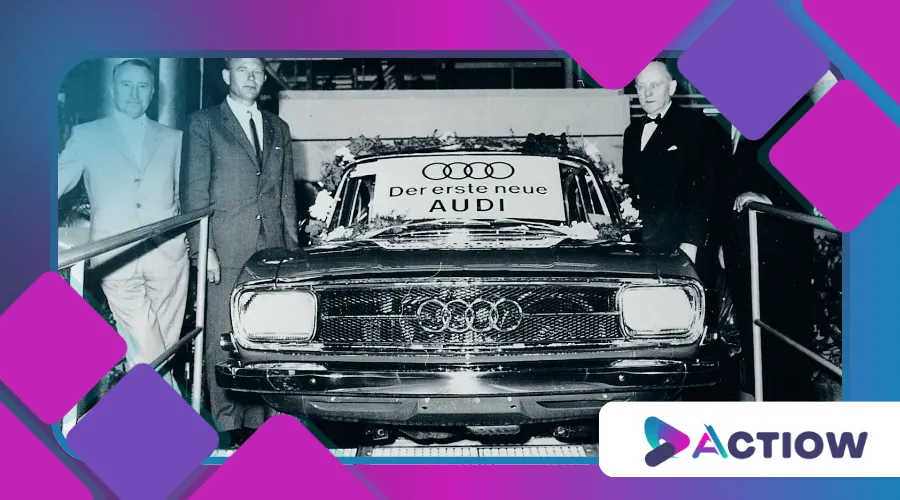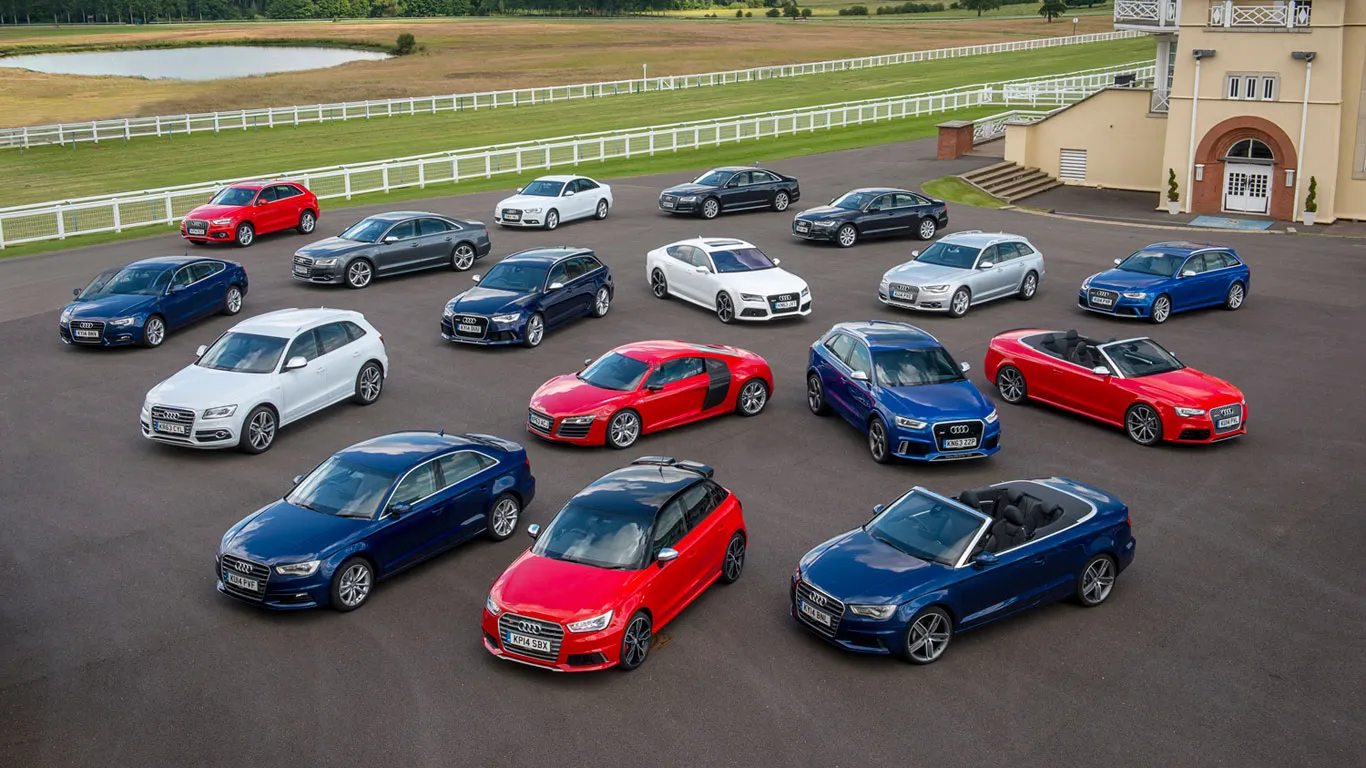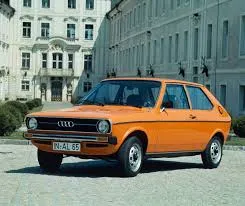The History of Audi: Technology and Innovation on Four Wheels

Anúncios
The history of Audi is a saga of relentless innovation, engineering prowess, and a vision that has reshaped the automotive landscape.
From its humble beginnings in Germany to its status as a global icon of luxury and performance, Audi has consistently pushed boundaries, blending cutting-edge technology with a passion for driving.
This narrative isn’t just about cars—it’s about a philosophy that places progress on four wheels, where each milestone reflects a commitment to excellence.
Anúncios
What drives a brand to redefine an industry time and again?
Let’s explore Audi’s journey through its defining moments, technological leaps, and unwavering pursuit of the future.
In this exploration, we will uncover how Audi’s commitment to innovation not only shaped its own identity but also influenced the entire automotive industry.
The Dawn of a Vision: Audi’s Origins
August Horch, a visionary engineer, laid the foundation for Audi in 1909 after parting ways with his first company, Horch & Cie.
The name “Audi,” Latin for “listen,” was a nod to Horch’s surname, which means “hear” in German.
This linguistic creativity set the tone for a brand that would harmonize tradition with innovation.
In 1910, the first Audi, the Type A, rolled out with a 2.6-liter four-cylinder engine, producing 22 horsepower—a modest start for a company destined to redefine performance.
By the 1930s, Audi joined forces with DKW, Horch, and Wanderer to form Auto Union, a conglomerate that birthed the iconic four-ring logo symbolizing unity.
This era wasn’t just about mergers; it was about survival.
The Great Depression and World War II tested the company’s resilience, yet Auto Union’s engineering spirit endured, setting the stage for post-war reinvention.
The history of Audi during this period reflects an ability to adapt, much like a river carving a new path through unyielding stone.
In fact, Audi’s journey during these formative years laid the groundwork for its reputation as a leader in automotive engineering, which continues to this day.
The Quattro Revolution: Redefining Performance
Fast-forward to 1980, when Audi unleashed a game-changer: the Quattro.
This all-wheel-drive system wasn’t just a feature; it was a paradigm shift.
While competitors focused on rear- or front-wheel drive, Audi’s engineers saw potential in distributing power across all four wheels.
The result? Unparalleled traction and control, especially in rally racing, where the Quattro dominated the World Rally Championship, securing titles in 1982 and 1984.
Consider the 1983 Rallye Monte Carlo, where Audi’s Quattro, driven by Hannu Mikkola, conquered treacherous icy roads, leaving competitors scrambling.
This wasn’t just a victory; it was a statement.
The Quattro’s success translated to road cars, making all-wheel drive synonymous with Audi.
Today, over 40% of Audi vehicles sold globally feature Quattro technology, a testament to its enduring impact, according to a 2024 sales report by Audi AG.
The history of Audi is inseparable from this innovation, which turned slippery slopes into opportunities for triumph.
For more insights into Audi’s performance innovations, visit Audi’s official website.
Table 1: Evolution of Audi Quattro Technology
| Year | Model | Key Feature | Impact |
|---|---|---|---|
| 1980 | Quattro | Permanent all-wheel drive | Revolutionized rally racing and road car performance |
| 1994 | A6 Quattro | Torsen differential | Enhanced stability and dynamic handling |
| 2016 | Q7 Quattro | Ultra technology | Optimized fuel efficiency with on-demand AWD |
| 2024 | e-tron Quattro | Electric all-wheel drive | Seamless power distribution in EVs |
Precision Engineering: The TDI Era
Audi’s pursuit of efficiency led to another milestone: the TDI (Turbocharged Direct Injection) engine.
Introduced in 1989 with the Audi 100 TDI, this diesel engine combined power with fuel economy, challenging the notion that performance comes at the cost of efficiency.
By injecting fuel directly into the combustion chamber, TDI engines achieved better thermal efficiency than traditional gasoline engines.
The result was a 3.3-liter five-cylinder engine delivering 120 horsepower while sipping fuel at a rate that made competitors blush.
The TDI’s legacy extends beyond numbers.
It powered Audi’s dominance in endurance racing, particularly at the 24 Hours of Le Mans, where Audi R10 TDI cars won from 2006 to 2008.
This wasn’t just about speed; it was about endurance, proving that efficiency could coexist with victory.
The history of Audi reflects this duality—power and responsibility—paving the way for sustainable performance in an era increasingly conscious of environmental impact.
Moreover, the TDI technology has influenced the entire automotive industry, pushing competitors to innovate in fuel efficiency and performance.
+ The History of Ford: How the Brand Democratized the Automobile
Electric Ambition: The e-tron Era
As the world pivoted toward sustainability, Audi didn’t just follow—it led.
The 2018 launch of the Audi e-tron marked the brand’s bold entry into electric vehicles (EVs).
Unlike early EVs that prioritized range over excitement, the e-tron blended Audi’s signature refinement with electrified power.
With dual electric motors and a 95-kWh battery, the e-tron delivered 402 horsepower and a range of over 250 miles, per EPA estimates.
Imagine a sculptor chiseling a masterpiece from raw stone—this is how Audi approached the e-tron.
Every curve, every system was designed to balance efficiency, performance, and luxury.
The e-tron GT, launched in 2021, took this further, offering 637 horsepower in its RS variant, rivaling supercars while emitting zero tailpipe emissions.
The history of Audi in the electric age is about redefining what an EV can be—not just a car, but an experience.
This commitment to electrification is not only a response to market demands but also a reflection of Audi’s dedication to a sustainable future.

Table 2: Audi e-tron Milestones
| Model | Launch Year | Key Specification | Market Impact |
|---|---|---|---|
| e-tron SUV | 2018 | 95-kWh battery, 402 hp | Established Audi as an EV leader |
| e-tron GT | 2021 | 93.4-kWh battery, 637 hp (RS) | Redefined performance EVs |
| Q4 e-tron | 2021 | Compact EV, 299 hp | Broadened EV accessibility |
| e-tron S | 2022 | Tri-motor setup, 496 hp | Pioneered high-performance electric SUVs |
Design as a Statement: Form Meets Function
Audi’s design philosophy is a masterclass in understated elegance.
From the single-frame grille introduced in 2004 to the sleek lines of the A8, Audi’s aesthetic is both timeless and forward-thinking.
The 2010 A7 Sportback, for instance, redefined the coupe-sedan hybrid with its sloping roofline and aggressive stance, proving that practicality needn’t sacrifice style.
This design wasn’t just eye candy; it improved aerodynamics, boosting efficiency by 10% compared to its predecessors, per Audi’s internal testing.
The history of Audi is also about human-centric innovation.
Take the Virtual Cockpit, introduced in 2014 with the TT.
This fully digital dashboard replaced analog gauges with a customizable 12.3-inch display, putting critical information—navigation, media, performance—directly in the driver’s line of sight.
It’s like having a personal co-pilot, seamlessly integrating technology into the driving experience.
Furthermore, Audi’s commitment to design extends beyond aesthetics; it enhances the overall driving experience, making every journey more enjoyable.
++ The History of Volvo: Safety and Innovation Since 1927
Motorsport as a Proving Ground
Racing isn’t just a sport for Audi; it’s a laboratory.
The history of Audi shines in its motorsport triumphs, from the Quattro’s rally dominance to Le Mans victories.
In 2012, Audi made history with the R18 e-tron Quattro, the first hybrid to win Le Mans, blending electric and diesel power for a 1-2 finish.
This wasn’t just a win; it was a glimpse into the future of sustainable racing.
Picture a chef perfecting a recipe under pressure—this is Audi in motorsport.
Each race refines technologies that trickle down to production cars.
The regenerative braking system in the R18, for example, inspired energy recovery systems in the e-tron lineup, improving range by up to 15%.
Audi’s racing legacy isn’t about trophies; it’s about pushing the envelope for every driver.
Moreover, the lessons learned on the racetrack often lead to innovations that enhance the safety and performance of everyday Audi vehicles.
Sustainability and the Road Ahead
Audi’s commitment to sustainability is no afterthought.
By 2025, Audi aims to have 30% of its lineup fully electric, with plans to phase out internal combustion engines by 2033, according to a 2024 statement from CEO Markus Duesmann.
This isn’t just a reaction to market trends; it’s a strategic pivot rooted in the history of Audi as a forward-thinker.
The Q6 e-tron, launched in 2024, uses a new Premium Platform Electric (PPE) architecture, offering faster charging (up to 270 kW) and a range exceeding 300 miles.
Yet, Audi’s vision extends beyond cars.
Its “Vorsprung durch Technik” (Advancement through Technology) ethos drives initiatives like the Audi Environmental Foundation, which funds renewable energy projects.
In 2024 alone, Audi invested €150 million in sustainable manufacturing, reducing CO2 emissions by 20% across its production facilities.
The history of Audi is evolving into a story of responsibility, where innovation serves both drivers and the planet.
In this context, Audi’s initiatives reflect a broader commitment to environmental stewardship, setting a benchmark for the automotive industry.

Challenges and Resilience
No journey is without hurdles.
The 2015 diesel emissions scandal, involving parent company Volkswagen Group, tested Audi’s reputation.
While Audi’s involvement was limited, the fallout demanded transparency and reform.
Audi responded by doubling down on electrification and compliance, launching the e-tron lineup and implementing stricter emissions protocols.
This resilience mirrors the history of Audi—turning setbacks into springboards for progress.
Another challenge is the competitive EV market.
Rivals like Tesla and BMW have pushed Audi to innovate faster.
The Q8 e-tron’s 2023 refresh, with a 20% range boost to 300 miles, shows Audi’s ability to adapt while maintaining its luxury edge.
The history of Audi is a testament to its knack for staying ahead, even when the road gets rough.
Moreover, navigating these challenges has strengthened Audi’s resolve to lead in innovation and sustainability, ensuring its place in the future of mobility.
Why Audi’s Legacy Matters
The history of Audi isn’t just a chronicle of cars; it’s a narrative of human ambition.
From the Quattro’s rally triumphs to the e-tron’s electric revolution, Audi has consistently turned ideas into reality.
Each innovation—whether TDI, Virtual Cockpit, or PPE architecture—reflects a brand that listens to the future while honoring its past.
For American drivers, Audi’s blend of performance, luxury, and sustainability offers a compelling choice in a crowded market.
As we look to 2025 and beyond, Audi’s trajectory suggests more than just new models.
It promises a redefinition of mobility, where technology and human aspiration converge.
The history of Audi is a reminder that progress isn’t about reaching a destination—it’s about reimagining the journey.
Ultimately, Audi’s legacy serves as an inspiration for future generations, demonstrating how innovation and responsibility can create a lasting impact on society and the environment.
